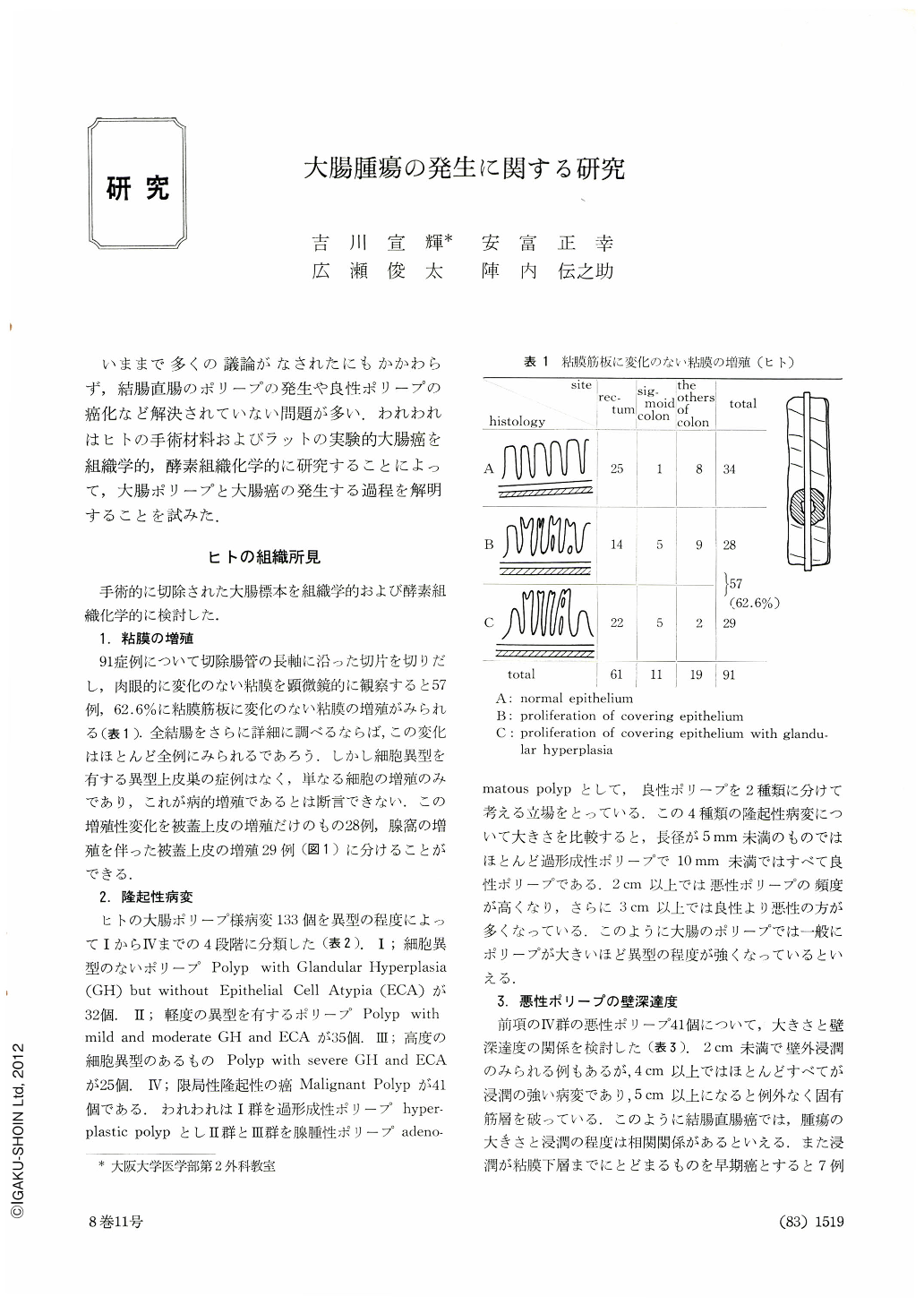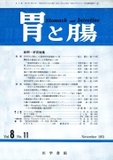Japanese
English
- 有料閲覧
- Abstract 文献概要
- 1ページ目 Look Inside
いままで多くの議論がなされたにもかかわらず,結腸直腸のポリープの発生や良性ポリープの癌化など解決されていない問題が多い.われわれはヒトの手術材料およびラットの実験的大腸癌を組織学的,酵素組織化学的に研究することによって,大腸ポリープと大腸癌の発生する過程を解明することを試みた.
After the histological and histochemical studies on the various types of the polypoid lesion from the resected specimen of human large bowel, we speculated that the proliferation of mucosal epithelium progressed hyperplastic polyp, followed by adenomatous polyp and then by carcinoma as the last stage.
To obtain the proof of this speculation, we examined many benign and malignant polyps of the rat colon morphologically which were produced experimentally by the rectal infusion of n-methyl-n'-nitro-n-nitrosoguanidine. It was found that the incidence of tumor was 89.7% and that the site and the time of the tumor-appearance were certainly stational. And so, it was possible to obtain the preparatory changes which had to occure within the epithelial glands before macroscopic tumors were noticed by the microscopic observation of the predilection place.
These intraepithelial changes of mucosae accounted for 93 lesions and were able to classify into 3 types. These were focal “hyperplastic epithelium” (38.7%), focal “adenomatous epithelium” (57.0%) with the various degree of cellular atypia, and “microscopic cancer focus” (4.3%). According to the growth of these epithelial changes, muscularis mucosae protruded and polypoid lesions appeared. In other words, hyperplastic polyp arised from hyperplastic epithelium, adenomatous polyp from adenomatous epithelium independently and cancer arised “de novo” from the normal epithelium. Also about the human material, I that “de novo” appearance of colo-rectal neoplasms must be true as the rat material, because it may be possible to obtain many microscopic epithelial changes by examining more in detail the human colonic epithelium microscopically.
On the other hand there was no answer whether benign polyp became malignant or not.

Copyright © 1973, Igaku-Shoin Ltd. All rights reserved.


